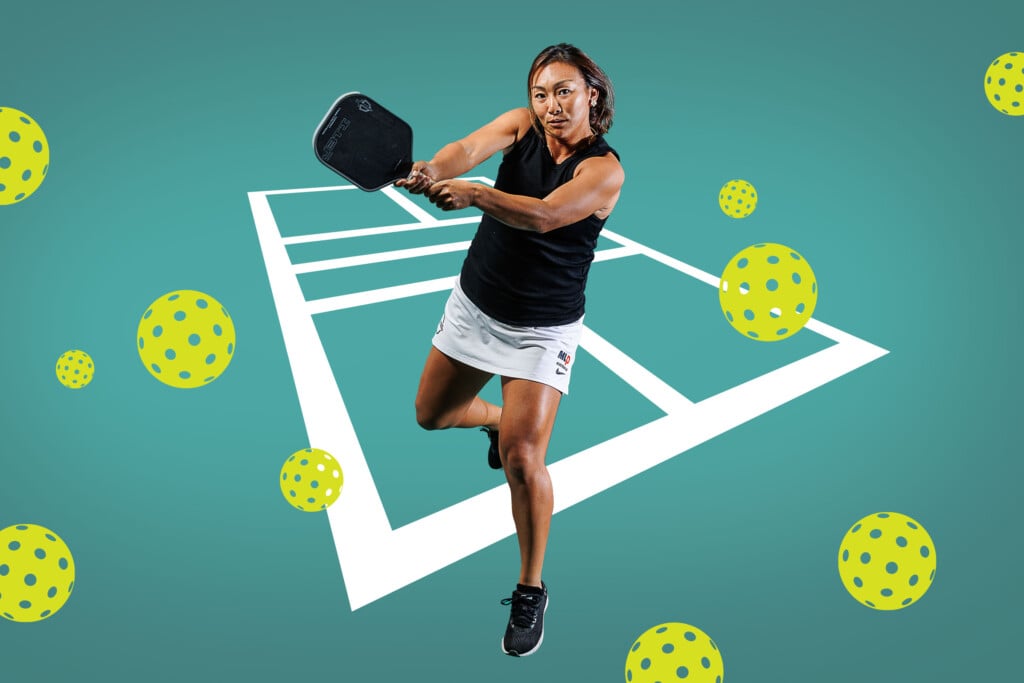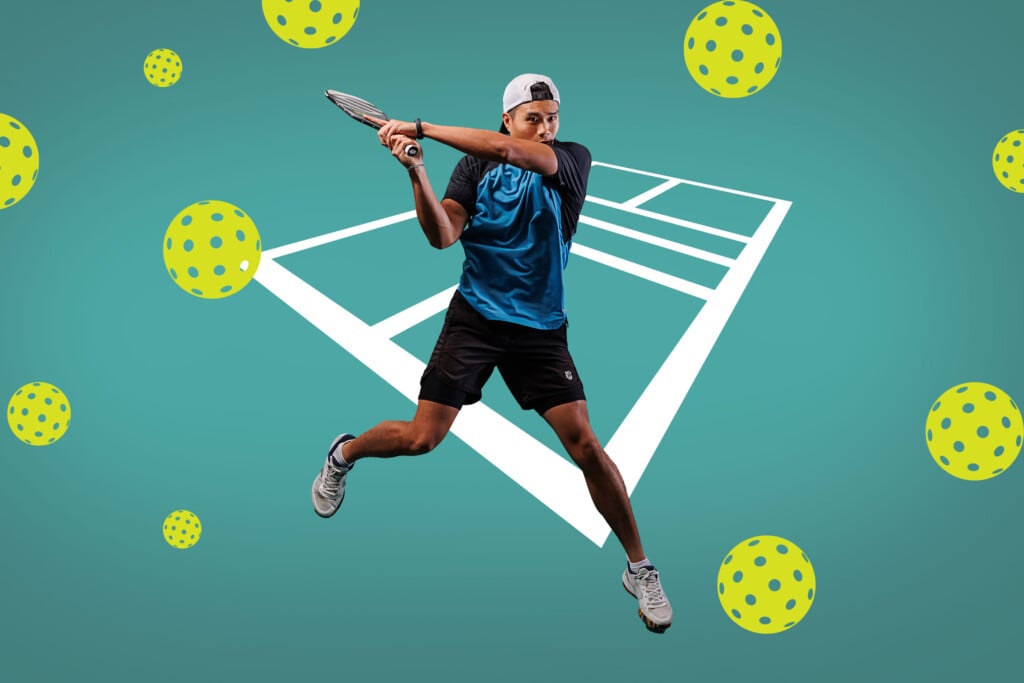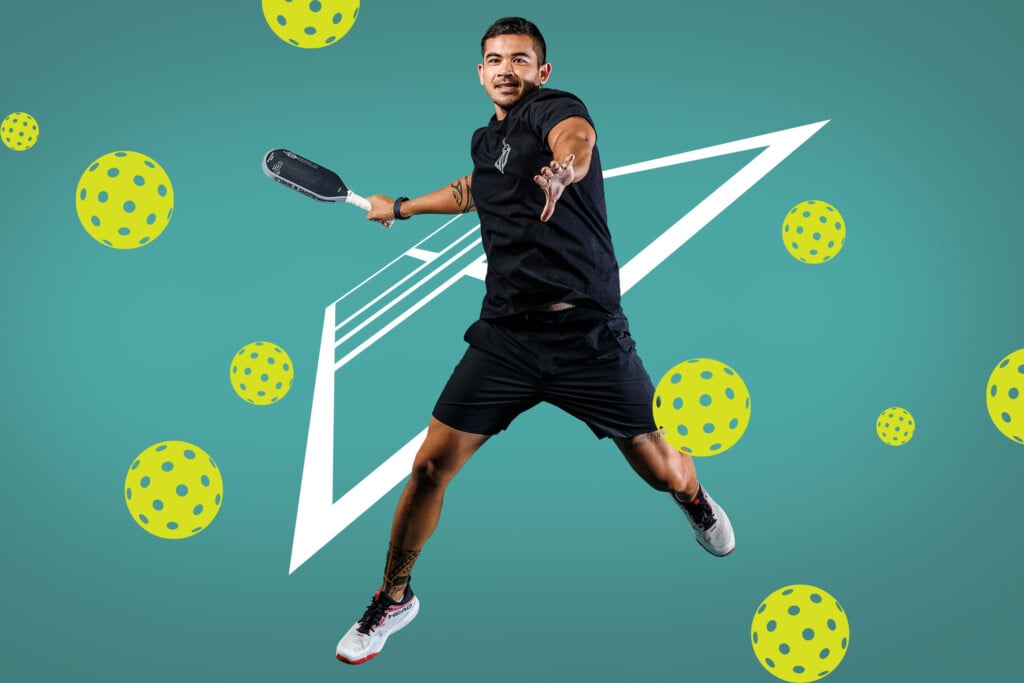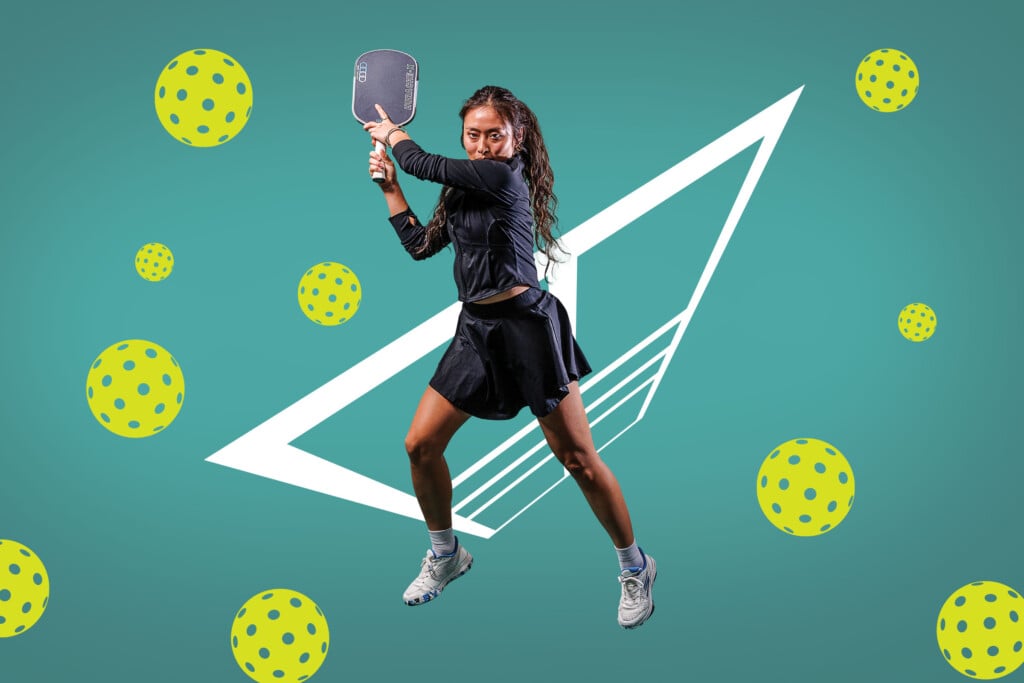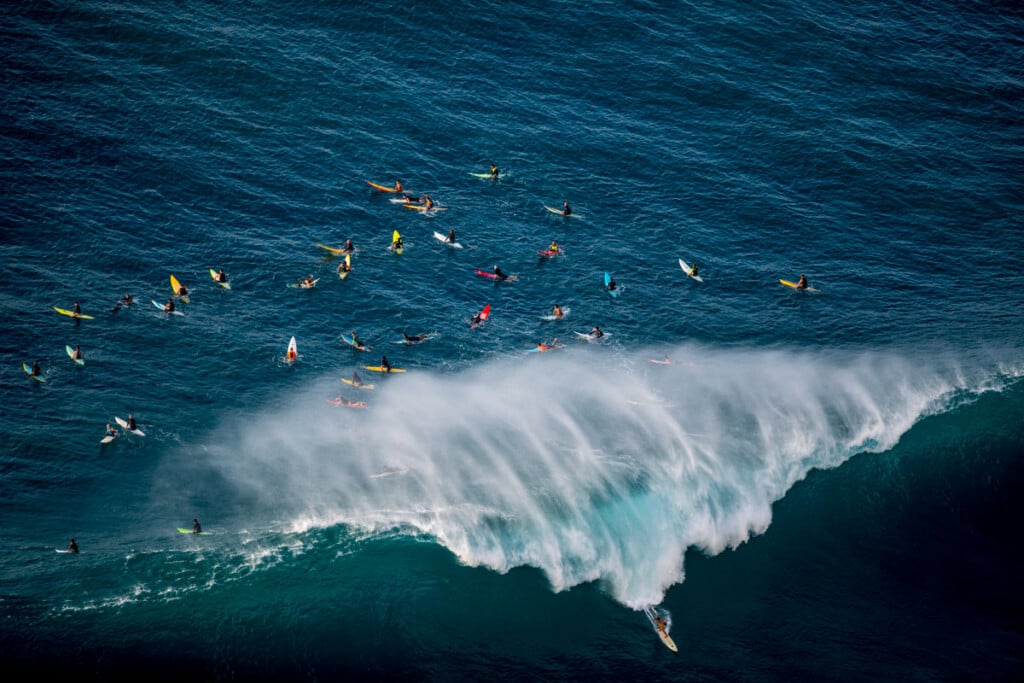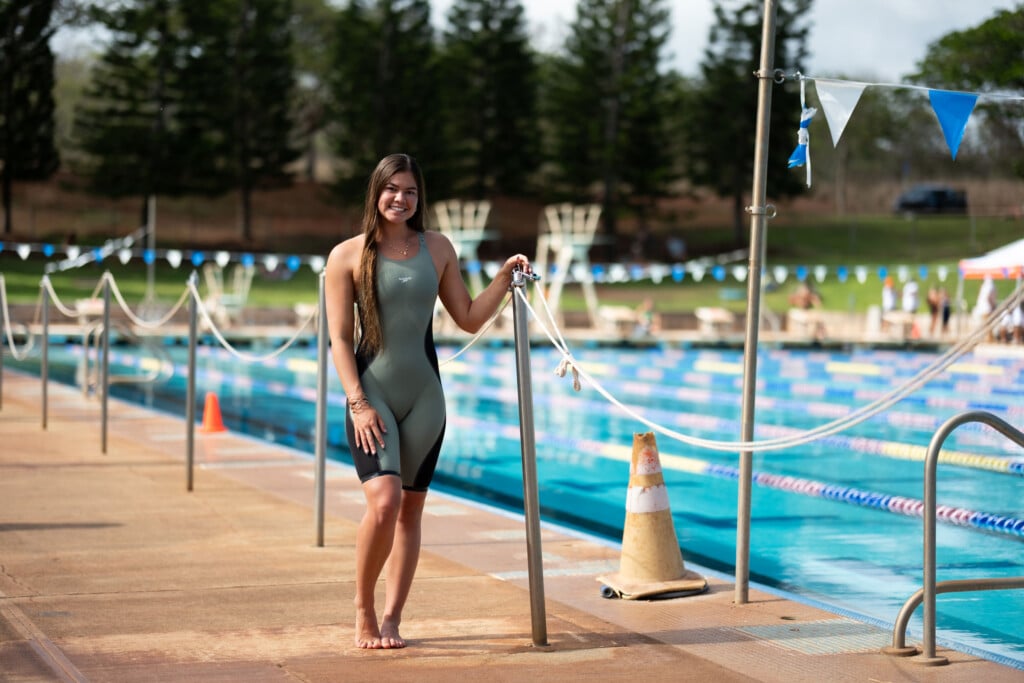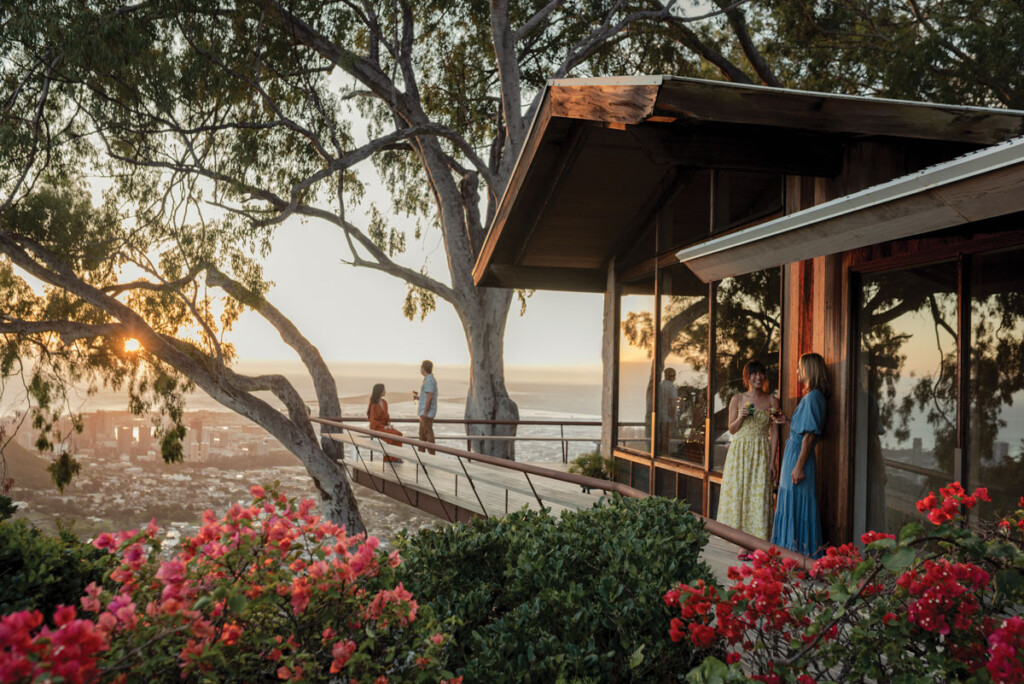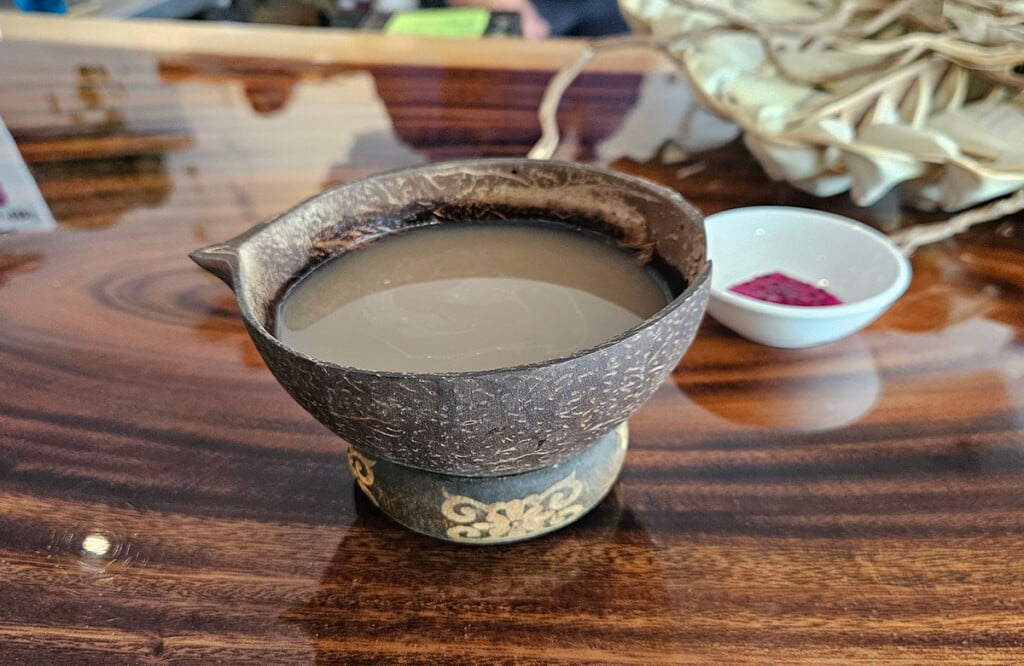It’s Everywhere: The Pickleball Craze
No longer just a game for retirees, pickleball has morphed in Honolulu into both a serious sport and a wildly popular activity for people of all ages. And it’s only getting bigger.
It’s the fastest-growing sport in America, a stat backed up by a 2024 report from The Sports & Fitness Industry Association and Pickleheads, which says pickleball has grown 223.5% in three years. Matches are shown on every major sports network, and the 24-hour streaming platform Pickleballtv logged more than 1 billion minutes watched last season.
Pickleball exploded in popularity during COVID-19 shutdowns when it was one of the few social activities allowed. But it was actually invented in Washington state 60 years ago and reached Hawai‘i decades before it had expanded to the rest of the country by the early ’90s.
As a child on Maui, Laurie Knox Loney and her family learned the game in the late ’60s from visitor Bob O’Brian, who was the neighbor of one of the sport’s founders. “My dad immediately became enamored and started building us a court in our driveway,” she says. Loney’s family played pickleball for many years on that makeshift court, then built a better one when they moved from Kīhei to Kula. After her parents relocated to O‘ahu in 2001, and Loney remained on Maui, her husband built a new court for their 25th anniversary.
“I played tennis for over 50 years also, and that’s fun, but this game is more fun to me,” she says. Now 67, she rents out her court in Kula and also teaches lessons. Pre-pandemic, it was mostly tourists coming to play, but after COVID-19 hit, her clientele skewed local. That’s continued, with Maui County being slow to add public courts. Her court is booked almost every day from 8 a.m. to 6 p.m.
On O‘ahu, however, the number of public courts has dramatically grown, to 188, with more to come. As part of its Kākou for Parks Program, the Honolulu Department of Parks and Recreation began adding pickleball court lines to existing tennis, basketball and volleyball courts in 2016. Because those courts are shared, they don’t have permanent nets, but the department is working on converting underutilized courts to stand-alone pickleball courts that do. The state’s first pickleball complex opened in the summer of 2023 at Ke‘ehi Lagoon Beach Park, which now boasts 12 pickleball courts where four tennis courts used to be (a typical pickleball court is 44 by 20 feet, up to four of which can fit on a standard 120-by-60-foot tennis court).
“You can train and have fun at the same time, which I think is the beauty of the sport.”
— Jamie Haas
The Backlash
Pickleball’s popularity hasn’t come without drama, as we saw last fall when the idea of converting some of Ala Moana Regional Park’s tennis courts angered local tennis players. After vociferous opposition, the city dropped any notions about reconfiguring any of the 10 courts, though pickleball lines have been added to the practice tennis area.
Then there’s the unavoidable and persistent thwacking of pickleballs. At a Mānoa neighborhood board meeting in October, residents spoke out about banning pickleball from within 500 feet of homes and schools because of the noise, which they say falls within a bothersome frequency range. Someone even put up a fake sign alerting pickleballers to play indoors or with quieter equipment. (A “quiet” paddle came out in November 2023, so “quieter” is possible.)
With cities around the country either banning pickleball courts or seeking ways to mitigate the noise, Mānoa Valley District Park planted about 25 ashoka trees in December to dampen the reverb, along with about 50 panax plants.
The Injuries
Pickleball has also been responsible for a spike in injuries. Jeremy Ueki has treated a growing number of patients with overuse injuries at his physical therapy practice, Rehab Therapy Partners in Kaimukī and Pearl City. “Ten years ago, CrossFit was a really big thing. It went really viral, and that was our newest stream of clientele,” he says. “Within the past couple of years, we’ve been getting more patients from pickleball-related injuries.”
They span from rolled ankles to broken shoulders and elbows from falls, and many of the patients are middle age or older. Players who pick up the sport after being inactive often come in with patellar tendonitis (jumper’s knee), or gluteus maximus or medius injuries.
“A proper stretching program would be ideal for them to work on, and it can be something as simple as a dynamic warmup before they even go out and play,” Ueki says. High knees, pulling your knees to your chest and moving your hips around can help, along with wearing tennis shoes with good traction and doing a post-workout stretch.
“Pickleball is more than just a sport, it’s a way of life.”
— Laurie Knox Loney
The Games Go On
But all this hasn’t squashed pickleball’s lure among all age groups, even those who had never played sports before. “It’s like a great video game. It’s easy to learn but hard to master,” says Miguel Maguyon, a 29-year-old commercial construction estimator. “I went from thinking it’s super cheesy and just for old people … but now I’m that guy” who plays at least four times a week.
At 6 p.m. on a recent weeknight, adults of all ages played matches on Koko Head District Park’s two courts, while others waited their turn. Meanwhile, kids practiced their strokes on an empty basketball court nearby. It’s like this most nights.
Jamie Haas, who played tennis at UH Mānoa and became a college tennis coach, is now a professional pickleball player; at one point she was ranked 19th in the world in women’s singles on the United Pickleball Association’s Professional Pickleball Association Tour. “It has all the fun parts of tennis … but it’s just so much faster,” she says. “When people compare tennis and pickleball, I’m like, well, you get more of a workout at pickleball, and they can’t believe it, but you’re just constantly playing. You hardly take a break, and it’s faster, so your heart rate naturally stays up.”
Haas and her husband, Prycen, were recently drafted to a premier team with Major League Pickleball Australia. Outside of Hawai‘i, tournaments offer top prize money, and combined with appearance fees and sponsorships, the best players can earn a quarter-million dollars a year. According to Major League Pickleball, pro players with MLP and the PPA Tour earned a collective total of more than $30 million in 2024.
The Organizers
Donna Ching, founder and president of the O‘ahu Pickleball Association, hopes pickleball can grow sports tourism in Hawai‘i with tournaments that attract international players. That was partly the impetus behind last November’s Aloha Pickleball Games & Festival at the Hawai‘i Convention Center, which included 45 new courts. There have been plenty of other tournaments too, such as the Hawai‘i State Pickleball Championships, Maui Pukaball Tournament, Hawai‘i Pickleball Open, Hawai‘i-Pacific Rim Pickleball Cup, Pearl Harbor Pickleball Invitational and more. This month—which happens to be National Pickleball Month—HONOLULU’s parent company, aio, is producing the Hawai‘i Pacific Health and ESPN Honolulu Open presented by HMSA.
“My focus is really the community aspect of it, and that’s what drives me to do what I do,” Ching says.
She picked up pickleball in 2016, while competing at a tennis tournament in Arizona. A stranger had offered to teach her the game, just for fun. That sportsmanship convinced Ching to hang up her tennis racket after 40 years. “For someone to just show you immediately how a sport’s being played, and to take that time—that social connection is what really sold me on the sport,” she says.
The following April, she formed the O‘ahu Pickleball Association and is now an ambassador for USA Pickleball. OPA schedules group play on the website Meetup, and also organizes exhibitions, lessons, tournaments, instructor training and other services. She says one of Hawai‘i’s top pickleballers, Xiao Yi Wang-Beckvall, got her start here in the Islands and now plays professionally on an Australian team.
“I do see OPA as a launching pad for others,” Ching says. “They want to do more rec play, that’s great. If they want to come in as a coach, that’s great. They want to come in as a volunteer, that’s great, because we have something for everybody.”
In addition to Wang-Beckvall, the Islands have produced such talented players as Bobbi Oshiro, who won gold at the USA Pickleball National Championships last fall, and Keven Wong, who participated in ‘Iolani grad and Pickleball Kingdom founder Ace Rodrigues’ TV series, Pickleball Paddle Battle, which was filmed in 2023 but has not yet been released.
A Pickleball Powerhouse?
“We want to put Hawai‘i pickleball on the map,” Haas says. “The better we do, I think it’ll build more traction for Hawai‘i, and hopefully put more money into the sport and the community.” She dreams of a Hawai‘i team that travels to tournaments off-island, with state support and sponsorships. “When you have that support, the sky is the limit,” Haas says. She also wants to see more local facilities, like the new Pickles at Forté.
Developed by Avalon Group, Pickles at Forté is the new pickleball center that replaced Walmart at Fort Street Mall in late January. It’s the first indoor facility here to focus solely on pickleball. Members can reserve six air-conditioned courts from 6 a.m. to midnight and there are changing rooms, two hours of free parking and free wi-fi, and plans to add bars and restaurants.
“There’s always going to be people who are not going to believe in you, who are not going to be necessarily behind you, because they don’t take the time to understand you,” Ching says. But she’s seen the power of pickleball in bringing multiple generations of people together. People generously share their equipment and knowledge, setting up nets and taping court lines for each other. They also volunteer for park cleanups and advocate for lights at outdoor courts to increase safety. That sense of community and connectedness is everything, she says. “The profile of a pickleball player is very giving in a lot of ways.”
In return, pickleball has been a lifeline for many people, pulling them out of isolation and promoting healthy lifestyles. “Pickleball is more than just a sport, it’s a way of life,” Maui’s Loney says. “It changes people’s lives, and I see it every day.”
Pickleball Basics
It can be tricky to grasp the rules and how to keep score, but here’s what to know.
Serves must go crosscourt, diagonally, from behind the baseline and past the receiving team’s nonvolley line. First serve is from the right side.
The receiver must wait for the ball to bounce once before returning, then it must bounce again before the serving team can hit it. After those first two bounces, players can choose to volley or hit it after one bounce.
The receiver’s partner should be at the nonvolley line. As the serving team swaps left and right, the receiving team moves back and forward.
You’re only allowed to step into the nonvolley zone, often called “the kitchen,” if the ball has bounced first.
If the serving team scores, the server switches to the left side. They continue alternating left and right until they commit a fault; then it’s their partner’s serve. After both servers commit a fault, serving switches to the other team (side out). After the first round only, side out happens after the first server’s fault.
Perfect Your Game
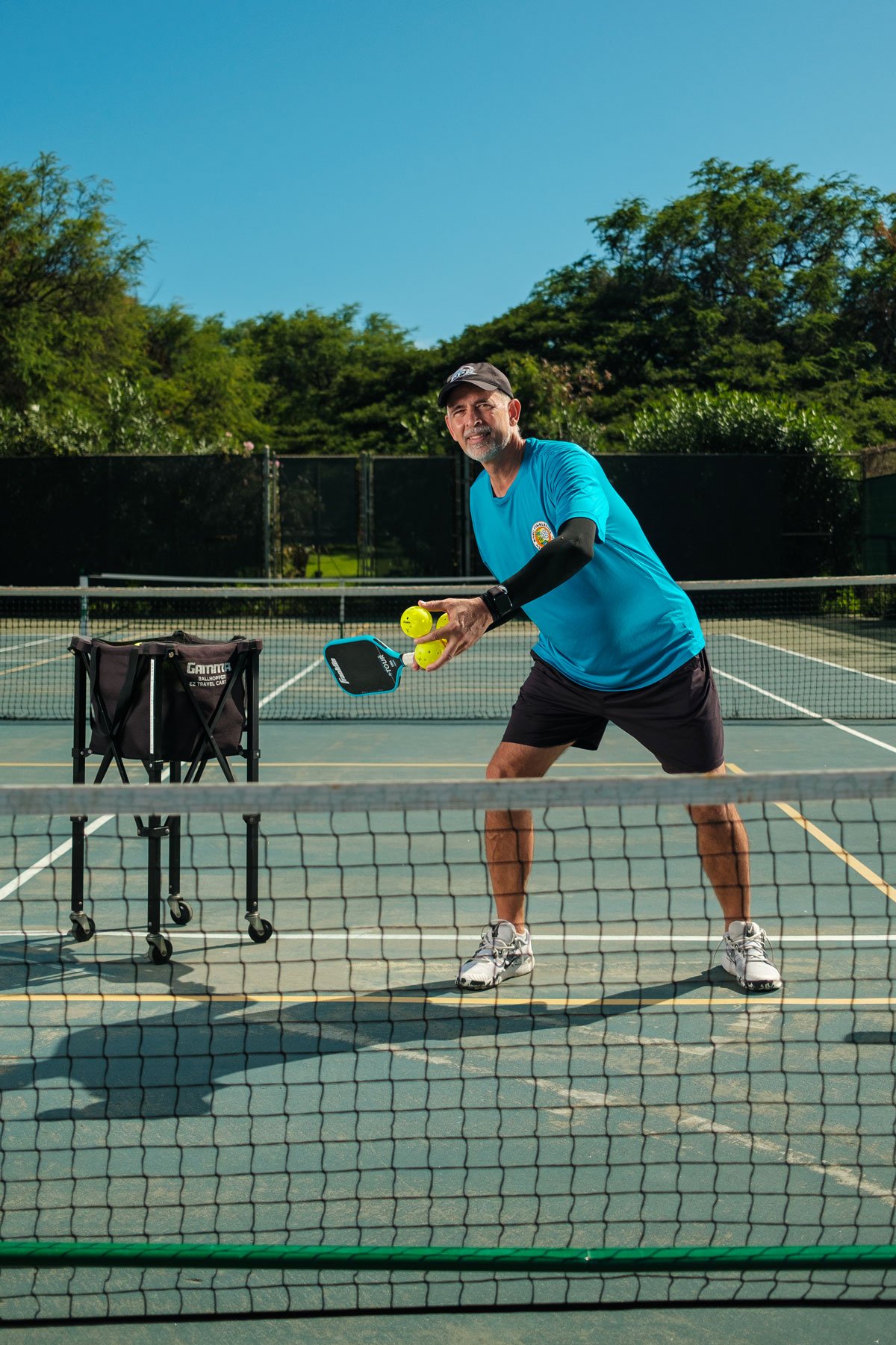
Eddy Rogers played racquetball professionally in his 20s before switching to a career in the game software industry (his brother is local entrepreneur Henk Rogers). Though he still played racquetball and squash recreationally, he turned into a “couch potato” while raising four kids with his wife, Miyuki. But like many others, he discovered pickleball during the pandemic, and before long, he was hooked. Now the 59-year-old is a certified instructor; he’s been coaching through the O‘ahu Pickleball Association for the past two years, and provides private lessons as well. With students, he focuses less on how to do something, and more on why. Here are his top tips:
Control the ball. Unlike tennis rackets, which have a little give in the strings, pickleball paddles are hard, so instead of hitting the ball, it’s more of a push. “You’ve got to be able to catch that ball on the paddle, without bouncing, and then control it to where you want it to go,” he says. “You just push the ball into certain areas.” Eventually, you can attempt “speed-ups” and power shots, but you need to get a feel for the ball first.
Keep your paddle up. A “Nasty Nelson” is when you get a point by intentionally hitting the player across from you during a serve—something that’s easy to do when up against beginning players who stand with their paddles at their sides. “Of course, a lot of people say that’s rude,” Rogers says. “But I teach them to try to hit [the receiver] because then that makes them understand that vice versa, someone’s gonna hit at them. What do you got to do? Keep your paddle up. Make sure it’s ready.”
Play at the kitchen. If you’re hitting the ball hard from the back of the court, your opponent’s going to softly drop it over the net into the kitchen before you can get to it. If everyone’s at the nonvolley line dinking it back and forth, all you have to do is wait for someone to lose control and pop it up so you can whack it down. “I always start teaching all my students with [the] understanding that it’s not trying to hit it hard from the start.”
Love at First Lob
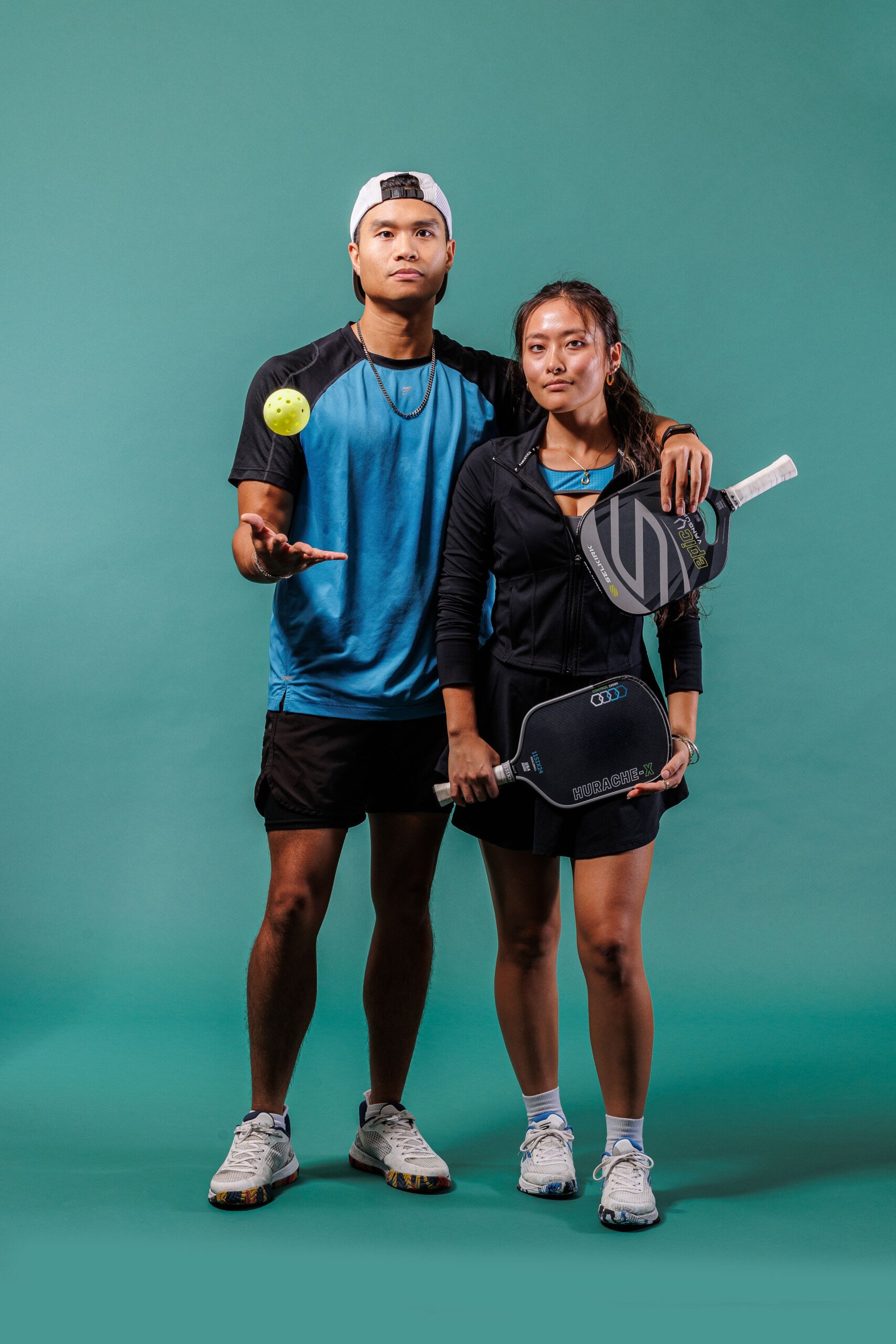
Miguel Maguyon, 29, used to think pickleball was for “old people.” Then a friend around his age tore his calf muscle playing the game. “That got me curious,” says the estimator for a commercial construction company. “I was like, there’s no way you injured your calf playing pickleball.”
Soon enough, the two friends were taking part in “open play” at pickleball courts in Kaimukī. One evening, Maguyon noticed a cute young woman and tried to get her attention by catching stray balls near her court. But before she even noticed him, he was called away to play his own game, and she was gone by the time he finished.
He later ran into the same woman in Waikīkī and asked if she happened to be playing pickleball in Kaimukī. She said she had been—and soon, the two started dating, including playing pickleball. A year and a half later, he and Nagisa Saito, 23, a psychology major at Kapi‘olani Community College, are going strong as a couple.
One of the first Christmas gifts Maguyon bought Saito was a paddle with her name on it. “We play in tournaments together. We play in league together as mixed doubles,” Maguyon says. “We also play against each other, but mostly in open play, or if we’re practicing with the team or drilling or something like that,” so they don’t get too competitive. “She would say that she’s better. I would say that I’m better, though I think that means we’re pretty much the same.”
Serving Fashion
Ace game day looks with locally designed gear and activewear.
By Brie Thalmann
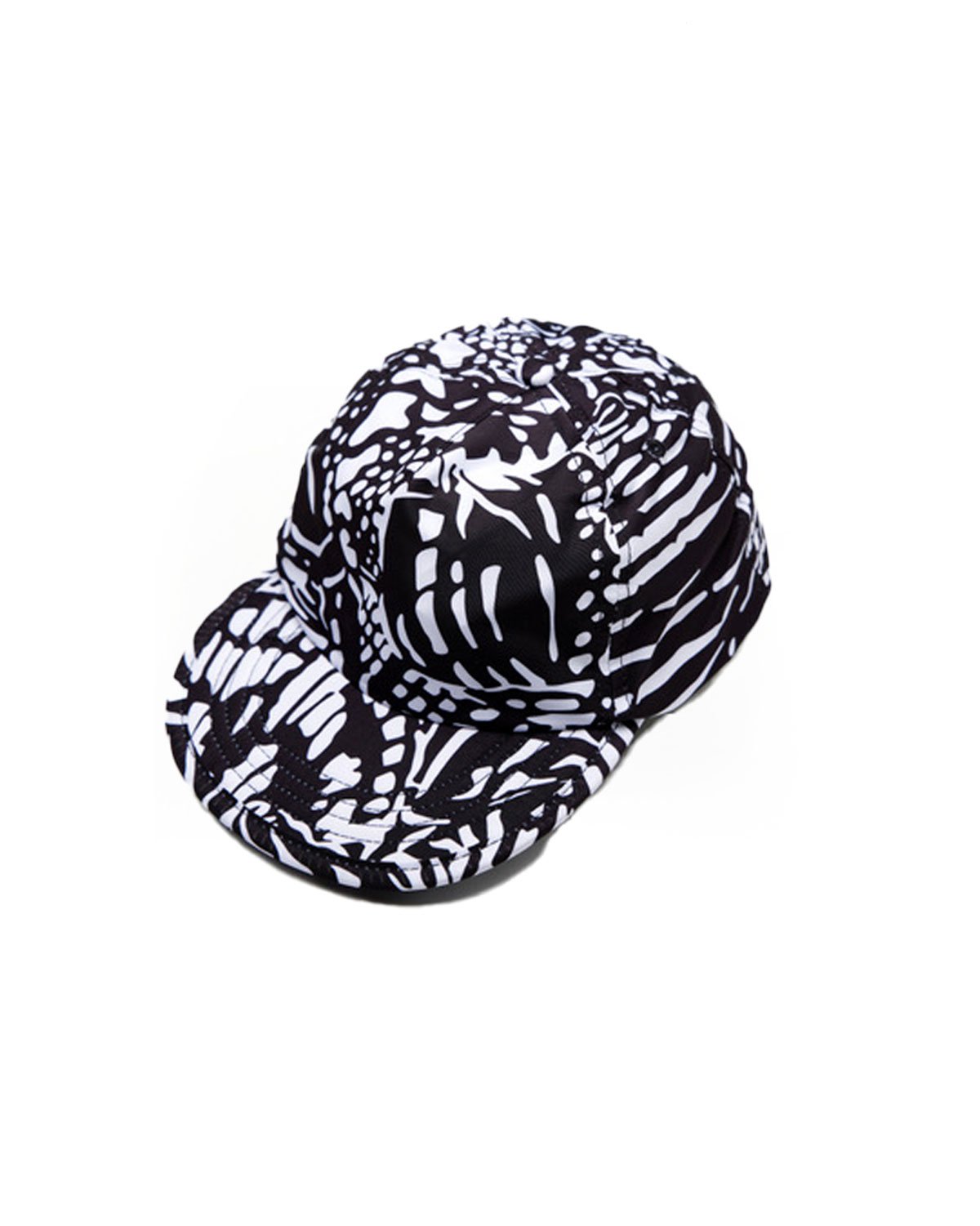
Designed by a local mom for picklers up to 10 years old, Alikaleo Park’s crushable caps feature vintage ‘Iolani Sportswear prints and offer UPF40+ protection.
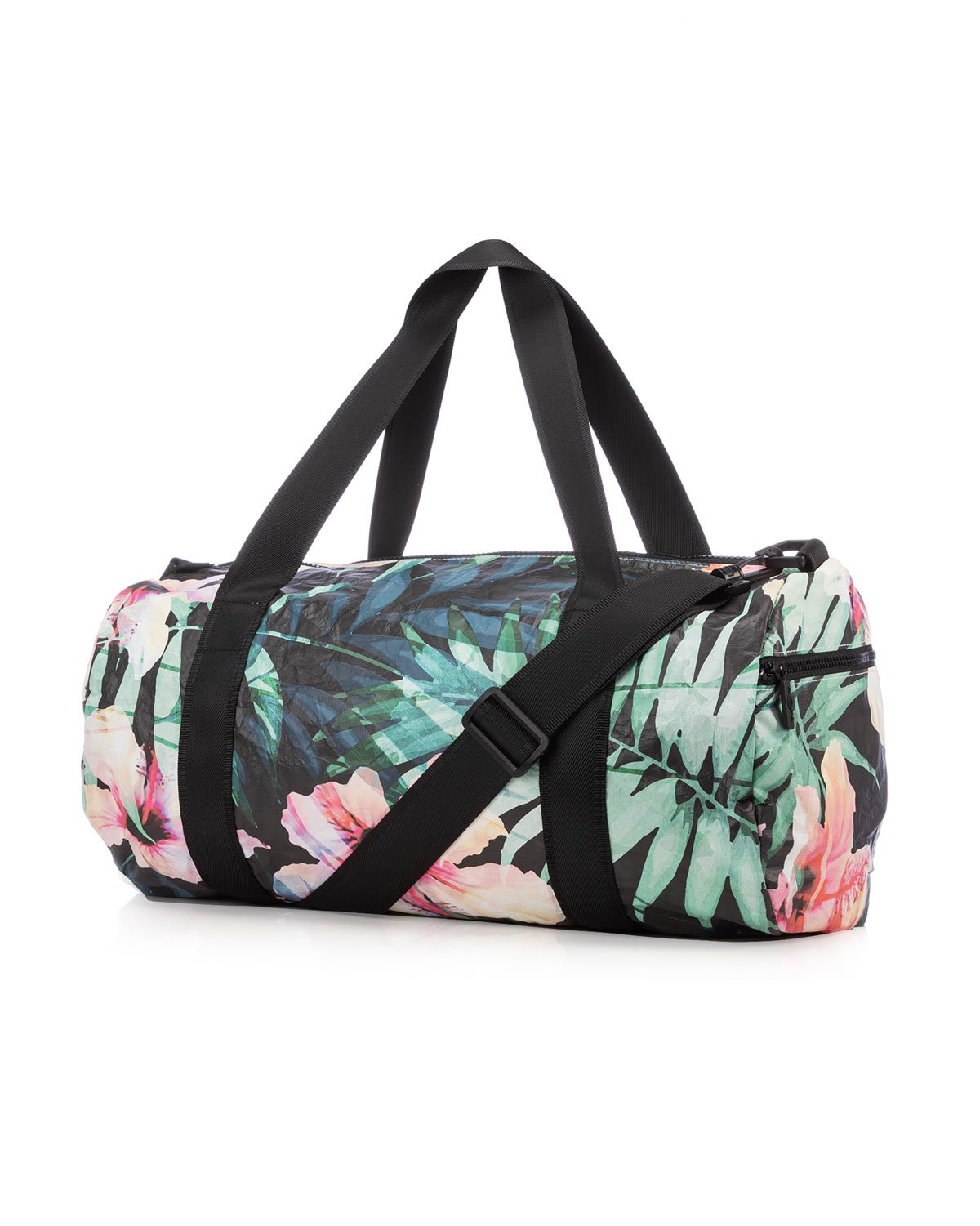
Roomy enough for paddles, balls, a water bottle and more, we love that Aloha Collection’s duffle bags are made of splash-proof (read: easy-to-clean) fabric.
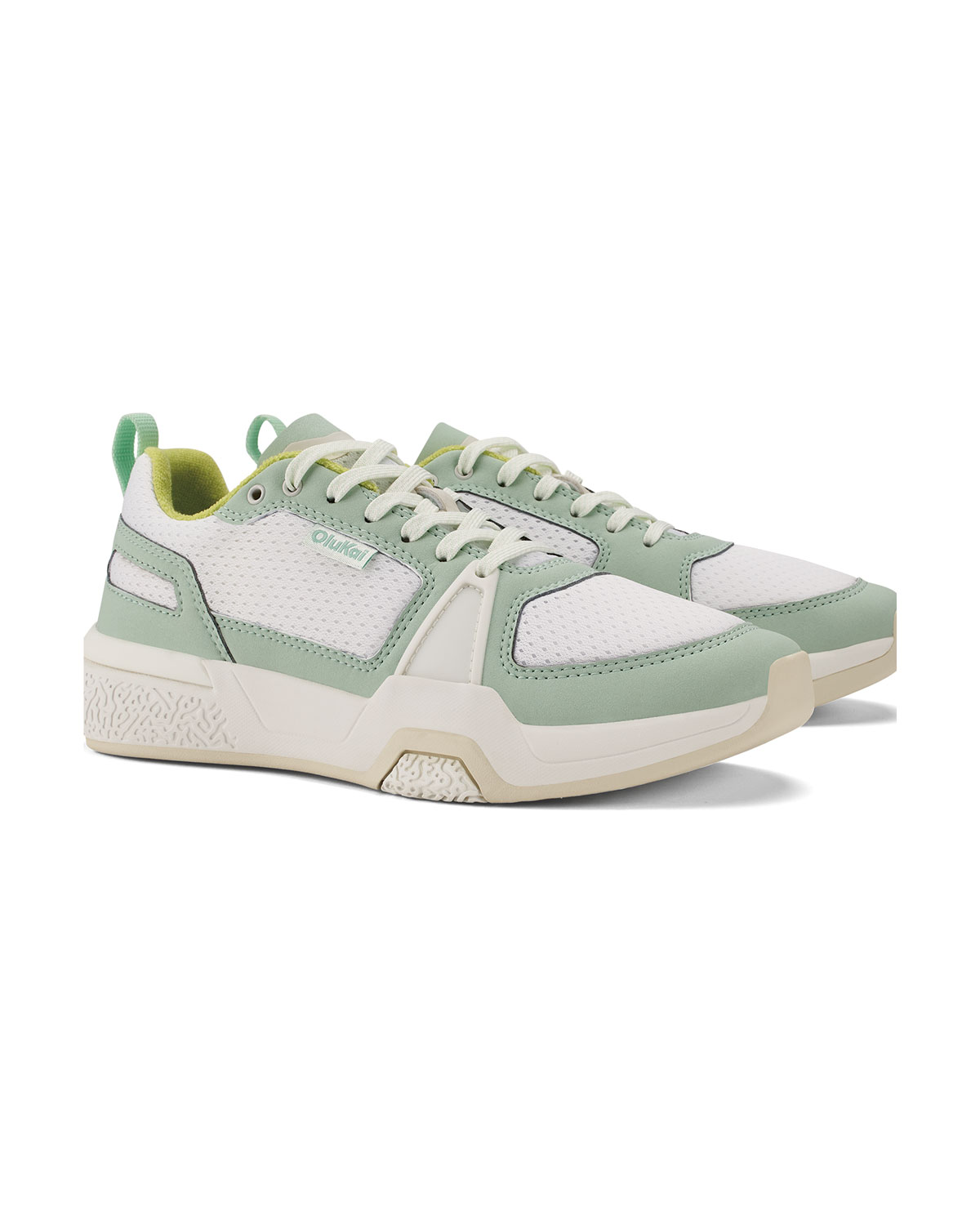
OluKai’s new ‘Anau court shoe features a supportive outsole wrap that allows for quick yet secure lateral movements and high-grip bottom that offers optimal traction.
$140 olukai.com, @olukai
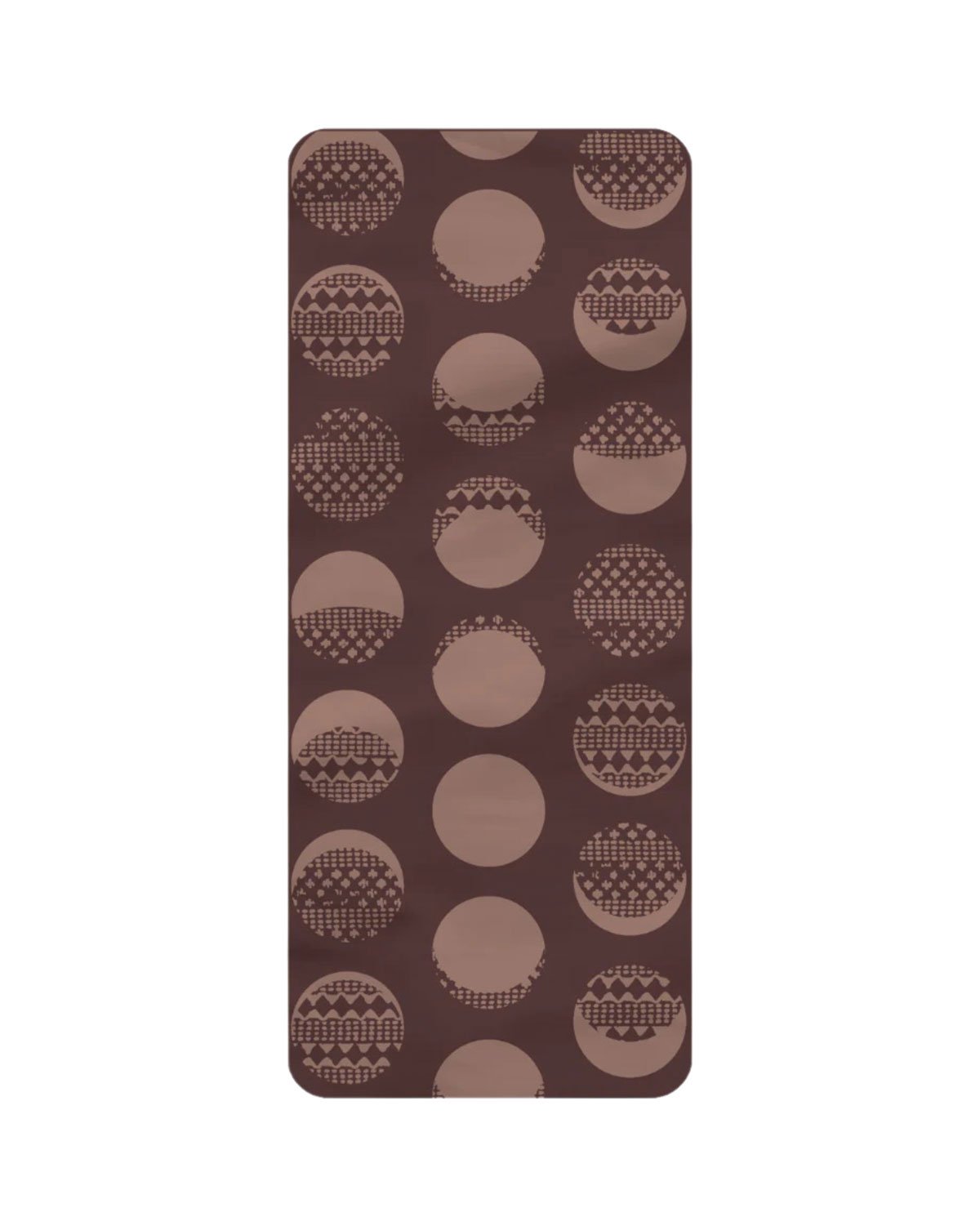
Sweat is no match for Aloha Modern’s microfiber sport towels, featuring moon, wave and lehua prints.
$30, alohamodern.com, @alohamodern

We’d rally to play in the newest performance skirt from Wahine Movement, outfitted with built-in shorts and a cool bark pattern.
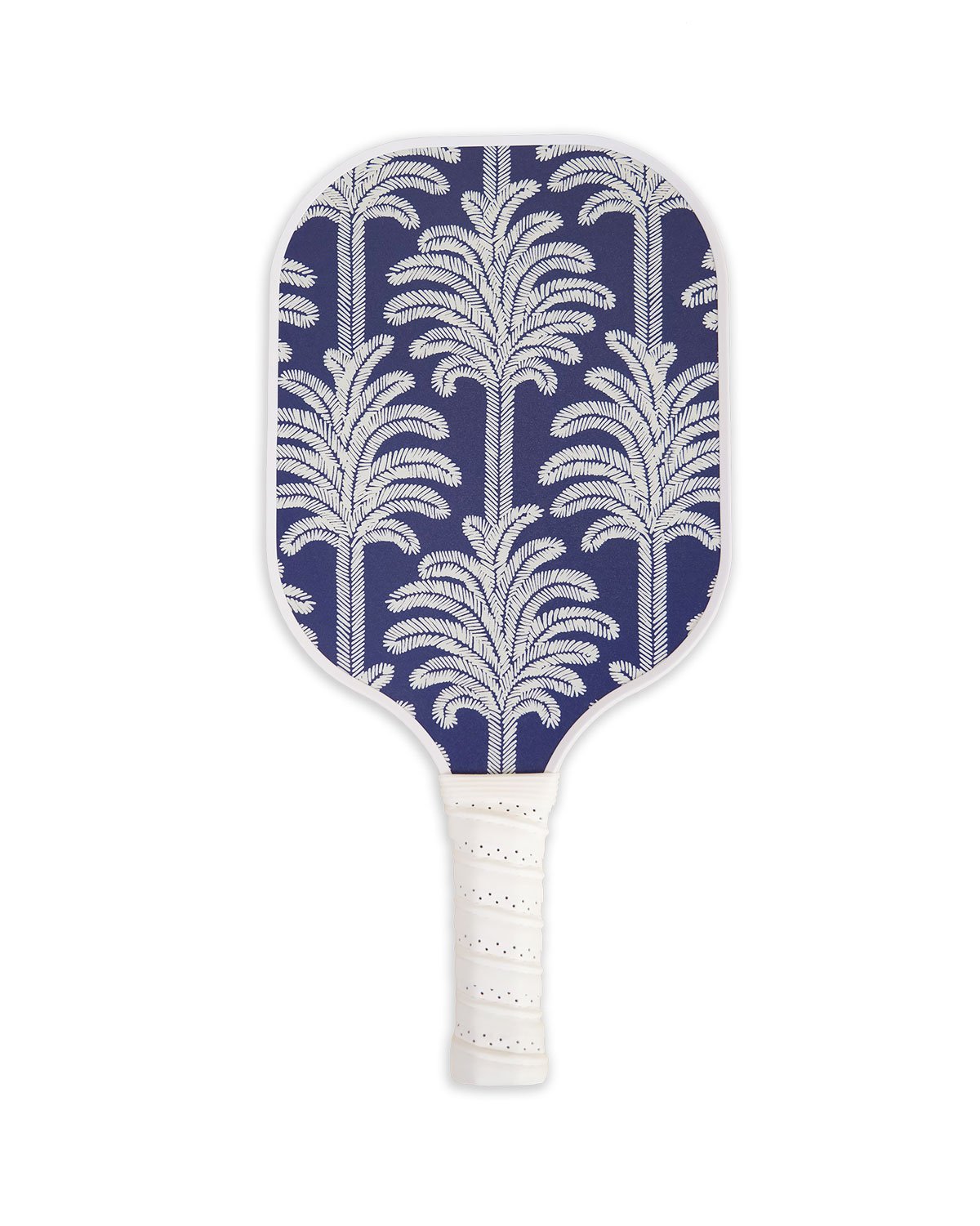
Made with a fiberglass exterior and carbon fiber handle, the Palm Reader Paddle from Tori Richard infuses style into every swing.
$78, toririchard.com, @toririchard
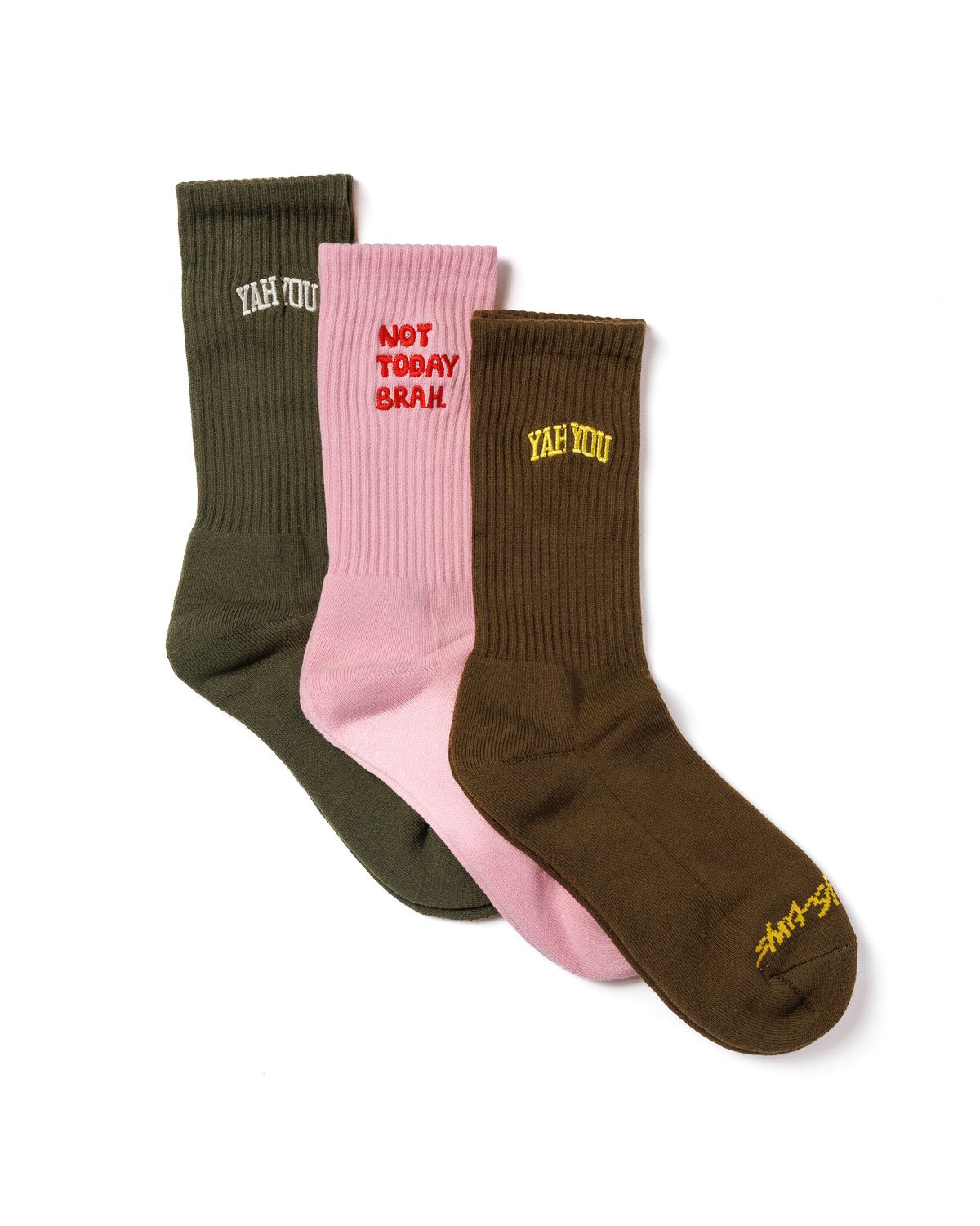
With socks this quippy, who needs smack talk? Though embroidered with different local phrases, Short Stack Hawai‘i’s cushy athletic socks all say the same thing—you came to throw down.
$15 each, shortstackhawaii.com, @shortstackhawaii
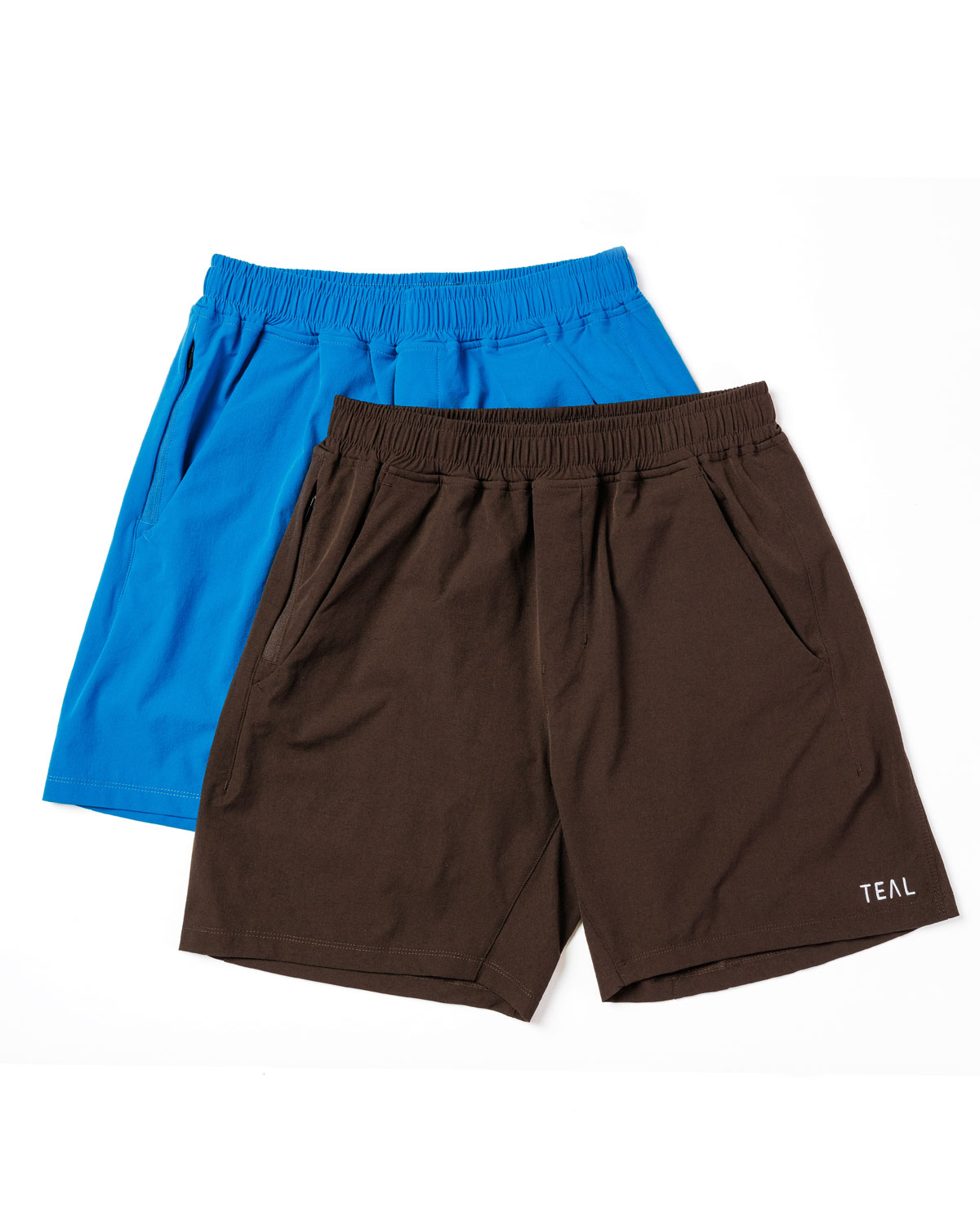
Workout wear label Active by Teal is expanding into men’s styles, starting with its Luxe Hybrid Men’s Shorts, crafted with a hidden interior zip pocket and a breathable nylon-spandex fabric.
$50 each, activebyteal.com, @activebyteal
The Pickle Pros
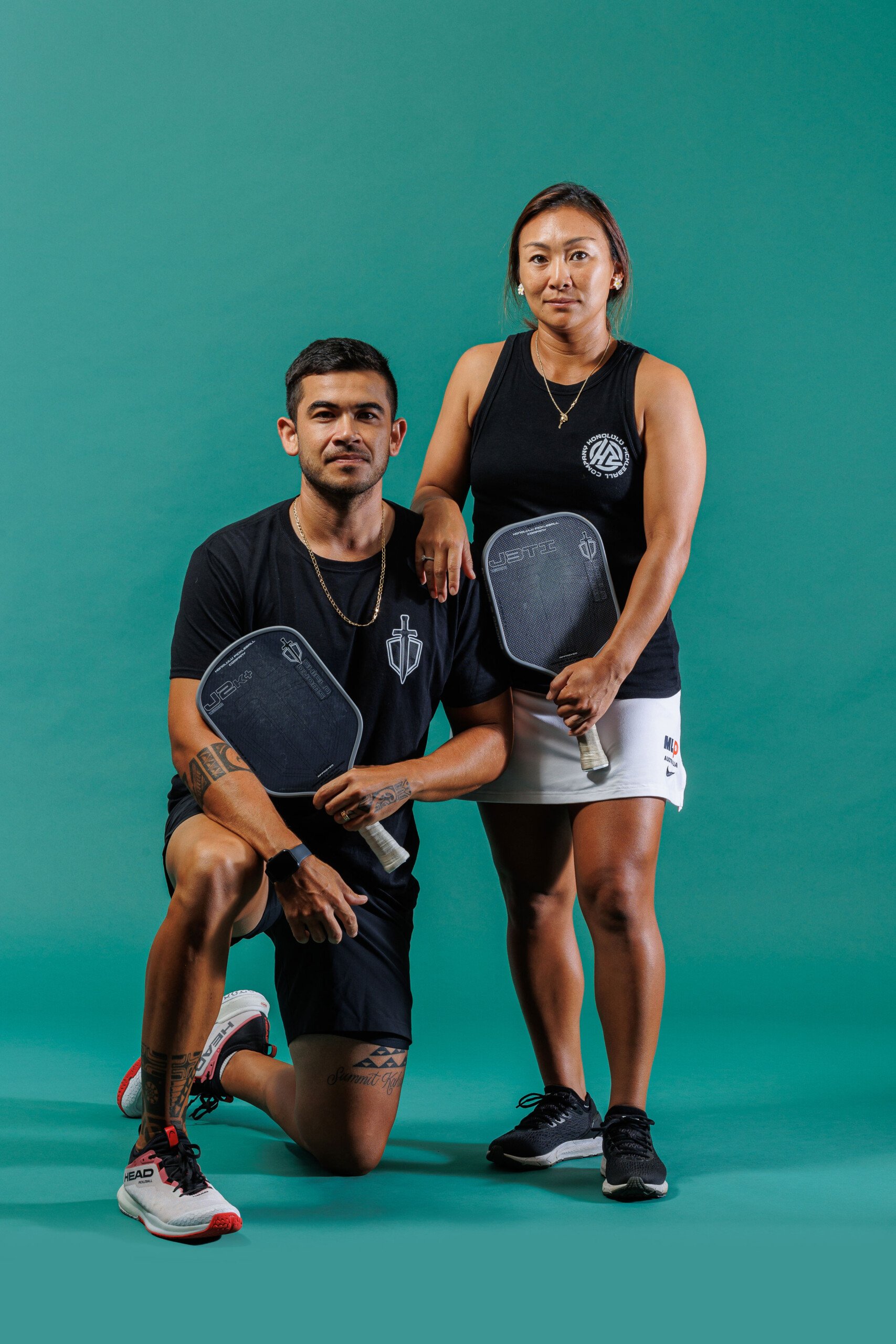
Three months after giving birth, Jamie Haas of Maunawili entered her first Association of Pickleball Players tournament, in Arizona. A month later, the 31-year-old placed fourth in an APP Pro Singles event. Over the next two years, Haas achieved the world’s No. 19 ranking in women’s singles on the Professional Pickleball Association Tour—a stunning trajectory for anyone, let alone a mom of three who picked up the sport for fun.
The former UH Mānoa tennis player, a lefty, took up pickleball so she could play with work friends while living on the mainland. Her husband, Prycen, played, too. They decided to move home to Hawai‘i while she was pregnant, and during that time, he entered his first tournament. “He was like, ‘Oh my gosh, it’s amazing. You have to do this after you give birth,’” she says. “He actually at one point was working three jobs just to allow me to travel and play because he believed that I could make it a full-time thing.”
After rubbing elbows with top players who make their living and support their families through pickleball, Haas says she and Prycen decided to go down the same path. It’s not easy to raise a family and travel the world, but the couple try to bring their kids to tournaments when possible.
“Ultimately, we’re doing it for them,” Haas says. “Hopefully it opens doors for them, not just for us.” She tries to compete in 10 or 12 tournaments a year, finding herself in Florida one week, then India a few weeks later. She’s part of Canadian and Australian leagues, even though she’d never been out of the country before picking up the game.
Haas also hopes to one day get involved with an after-school program to build the next generation of players. “I think that would be awesome because they have a lot of that on the mainland and I haven’t seen that so much yet here. But we’re off to a good start.”
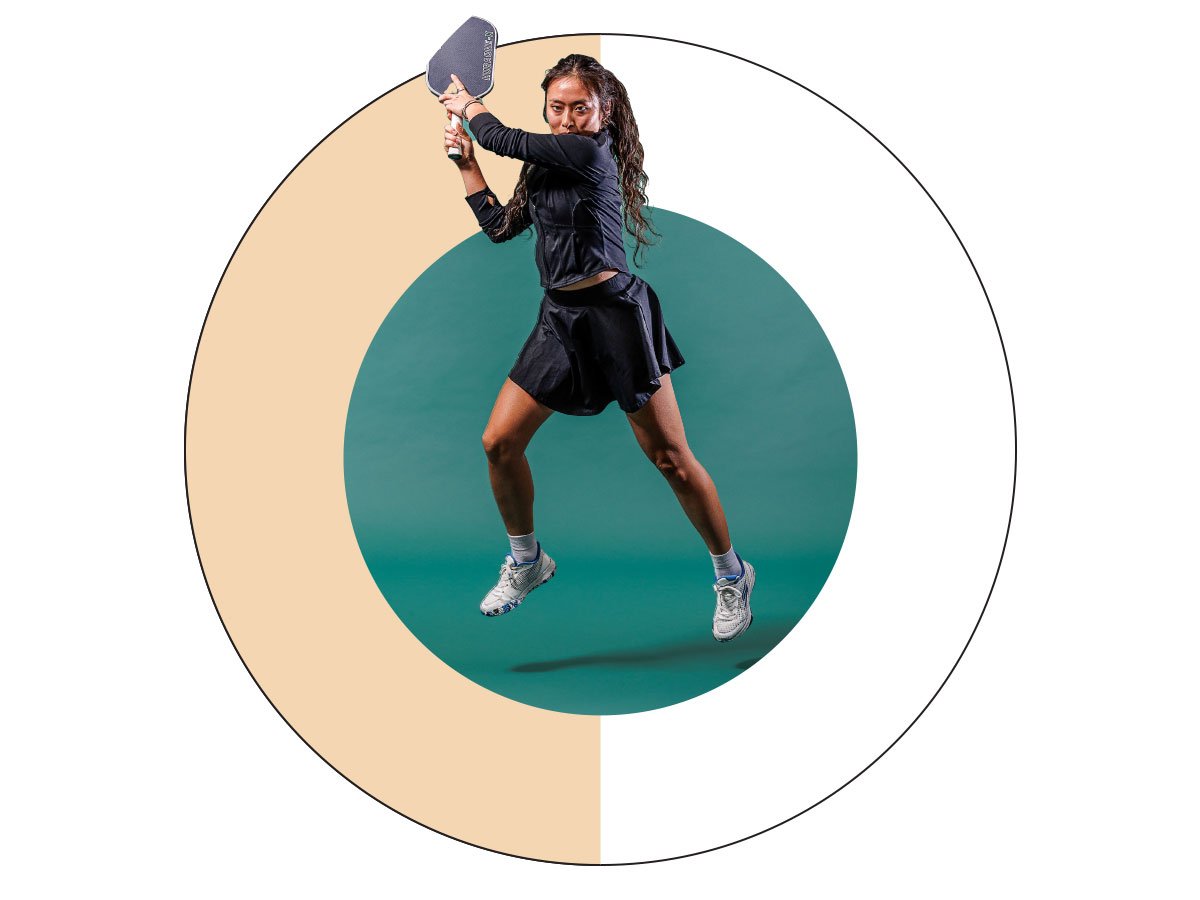
Ready, Set, Dink!
Public and private lessons are available at every price range and level. Here are some options.
The Honolulu Department of Parks and Recreation offers free seasonal pickleball classes for newbies through advanced players as young as 7. Go to pros.hnl.info and click on “Activities” for a full list; you can filter by district, age and more.
The Catholic Charities Hawai‘i Lanakila Multi-Purpose Senior Center sometimes offers free pickleball classes for folk 60 and older. Call (808) 847-1322 to learn more.
Beyond Ball Hawai‘i in Kailua offers beginner and intermediate lessons for adults for $15. Download Glofox for iOS or Android, search for Beyond Ball and register through the booking app.
The O‘ahu Pickleball Association offers lessons at the Diamond Head Tennis Center at Kapi‘olani Regional Park. Register by skill level at oahupickleballassociation.org. Group lessons are $75 for nonmembers.
The Nu‘uanu YMCA offers lessons ($75/session) to those 13 and up. Discounts are available for small groups registering for multiple lessons.

Where to Play
From public parks to private indoor courts, there are hundreds of places to volley across the island. Some top picks:
Free Outdoor Courts
More than 188 pickleball courts are now available at 94 city parks. Here are some good options:
- Dole Community Park (three courts, lights)
- Ka‘ala Neighborhood Park (three courts, two with permanent nets, lights)
- Kailua District Park (eight courts, four with permanent nets, lights)
- Kalākaua District Park (five courts, lights)
- Kamilo Iki Community Park (eight courts)
- Ke‘ehi Lagoon Beach Park (12 courts with permanent nets)
- Mānana Neighborhood Park (Shigeo Ushiro) (one dedicated pickleball court)
- Mother Waldron Neighborhood Park (two dedicated pickleball courts)
- Petrie Community Park (three courts, lights)
- Waipi‘o Neighborhood Park (six courts)
Here is the full directory of city pickleball courts.
Solo pickleballers looking for practice walls can find them at 25 parks (the ones with the asterisks) here.
Free Indoor Courts
For indoor play, these district parks have gyms with free play hours specifically for pickleball: Koko Head, Kailua, Booth, McCully, Waipahu, Kāne‘ohe, Waialua. Find each facility’s schedule at bit.ly/OahuPlaygrounds and filter by gymnasiums.
Private Courts
Pickles at Forté opened in Downtown Honolulu in late January with six air-conditioned courts, changing rooms, free wi-fi and two hours of free parking during open play, daily from 6 a.m. to midnight. Members can have up to three 90-minute reservations per week. Membership starts at $125/month.
Wai‘anae Coast YMCA is open for play Tuesdays and Thursdays from 9 to 11 a.m. if you join Pickleball+, free for Y members and $30 per month for nonmembers. Equipment is provided, and tai chi and active older adult group exercise classes are part of the program.
Beyond Ball Hawai‘i also has open play Tuesdays and Thursdays from 9 to 11 a.m. at its three indoor courts in Kailua. It’s $12–$15 depending on which credit pack you purchase.
If you have base access, rent a set of paddles, balls and a net for $10 a day at the Schofield Barracks Outdoor Recreation Center.
Join The Salvation Army Kroc Center in Kapolei for access to pickleball courts, including pickup games. Individual and family memberships are available. A general adult membership is $73 per month.
Those not staying at the resort at Turtle Bay can still rent a court there for $50 an hour.
Need People to Play With?
Open play hours allow players of all levels to hop in with whoever else is there, so even if you don’t have a partner, you can rotate in. Check individual parks for schedules.
If you want to arrange a game ahead of time, consider joining Facebook groups such as Love Hawai‘i Pickleball (2,200-plus members) or Hawai‘i Pickleball Aloha Style (2,400-plus members).
The O‘ahu Pickleball Association holds hosted open play (check meetup.com/oahu-pickleball-association) and other perks for members ($30 a year).
K2 Pickleball organizes league games in addition to lessons and clinics at Moanalua High School.
And don’t be surprised if other players just walk up to you with an invite to join them!
